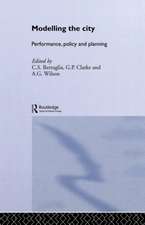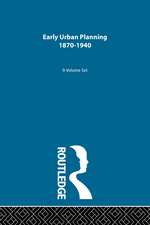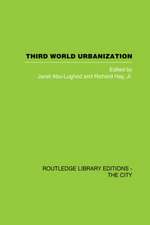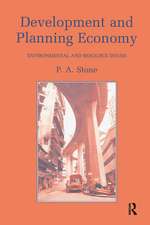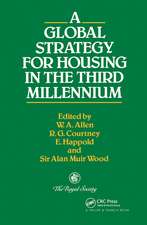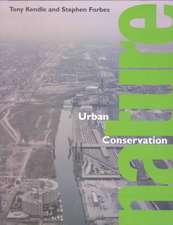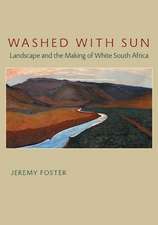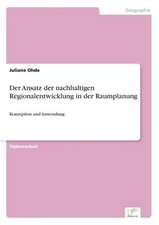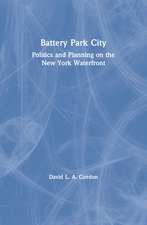Designing Cities with Children and Young People: Beyond Playgrounds and Skate Parks
Editat de Kate Bishop, Linda Corkeryen Limba Engleză Hardback – 25 mai 2017
With international and interdisciplinary contributors, this book sets out to build bridges and provide resources for policy makers, social planners, design practitioners and students. The content moves from how we conceptualize children in the built environment, what we have discovered through research, how we frame the task and legislate for it, and how we design for and with children. Designing Cities with Children and Young People ultimately aims to bring about change to planning and design policies and practice for the benefit of children and young people in cities everywhere.
| Toate formatele și edițiile | Preț | Express |
|---|---|---|
| Paperback (1) | 311.13 lei 6-8 săpt. | |
| Taylor & Francis – iun 2017 | 311.13 lei 6-8 săpt. | |
| Hardback (1) | 1022.48 lei 6-8 săpt. | |
| Taylor & Francis – 25 mai 2017 | 1022.48 lei 6-8 săpt. |
Preț: 1022.48 lei
Preț vechi: 1371.07 lei
-25% Nou
Puncte Express: 1534
Preț estimativ în valută:
195.69€ • 203.76$ • 165.37£
195.69€ • 203.76$ • 165.37£
Carte tipărită la comandă
Livrare economică 10-24 martie
Preluare comenzi: 021 569.72.76
Specificații
ISBN-13: 9781138890817
ISBN-10: 1138890812
Pagini: 278
Ilustrații: 115
Dimensiuni: 178 x 254 x 22 mm
Greutate: 0.88 kg
Ediția:1
Editura: Taylor & Francis
Colecția Routledge
Locul publicării:Oxford, United Kingdom
ISBN-10: 1138890812
Pagini: 278
Ilustrații: 115
Dimensiuni: 178 x 254 x 22 mm
Greutate: 0.88 kg
Ediția:1
Editura: Taylor & Francis
Colecția Routledge
Locul publicării:Oxford, United Kingdom
Public țintă
Postgraduate, Professional, Professional Practice & Development, and UndergraduateCuprins
Foreword
Introduction
Kate Bishop and Linda Corkery
Part 1: Global and regional initiatives with local value
- Child Friendly Cities: a model of planning for sustainable developmentKaren Malone
- Children as natural change agents: Child Friendly Cities as Resilient CitiesVictoria Derr, Louise Chawla and Willem van Vliet
- Nordic child-friendly urban planning reconsideredFredrika Martensson and Maria Nordstrom
- Envisioning urban futures with children in AustraliaLinda Corkery
Part 2: Utilizing research with children and young people - A place for adolescents: the power of research to inform the built environmentPatsy Eubanks Owens
- Utilizing research for the benefit of children’s lives in cities: acknowledging barriers and embracing changeKate Bishop
- Being ourselves: children and young people sharing urban open spacesHelen Woolley
- Children as urban design consultants: a children’s audit of a central city square in Auckland, Aotearoa/New ZealandPenelope Carroll and Karen Witten
Case Studies: Part 1
Part 3: Instruments with impact: legislation and policy - Accommodating children’s activities in the shared spaces of high density and master planned developmentsCathy Sherry
- Every child matters: policies and politics that influence children’s experience of outdoor environments in EnglandHelen Woolley
- How are Child Impact Analyses used in planning child-friendly environments: the Swedish experienceMaria Nordström
- NSW parliamentary inquiries into children, young people and the builtenvironment: what are they and how did they come about?
Linda Corkery and Kate Bishop
Part 4: Perspectives from participatory practice with children and young
people - Designing with children: a practitioner’s perspectiveFiona Robbé
- At the ‘center’: young people’s involvement in youth centers from design to usageKatina Dimoulias
- Engaging children and adolescents in local decision-making: Growing Up Boulder as a practical modelMara Mintzer and Debra Flanders Cushing
- Preparing children and young people for participation in planning and design: built environment education in Germany
Angela Million
ConclusionIndex
Kate Bishop and Linda Corkery
Case Studies: Part 2
Descriere
Designing Cities with Children and Young People focuses on promoting better outcomes in the built environment for children and young people in urban environments. This book aims to cultivate champions for children and young people among urban development professionals, to ensure their rights and needs are fully acknowledged and accommodated. The content moves from how we think about children in the built environment, what we have discovered through research, how we frame the task and legislate for it, and how we design for and with children.



